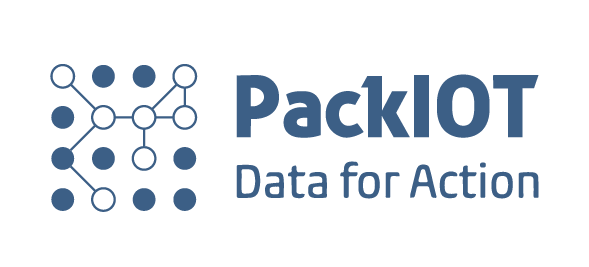*By Fernando Pacheco – COO at PackIOT
First of all, I would like to make something clear: I don’t wish this article to be another one of those “guru” posts that you read on the internet (10 things to do to keep your operator engaged).To write this text, I tried to compile the years of experience of our team of production specialists (at PackIOT), combined with my background as a manager and researcher. I really hope this can turn into something useful for you and your team.
For whom this content is intended: line supervisors, shift coordinators, plant managers, industrial directors, business managers, operators, and future leaders.
In a recent survey, TTI Global has released some choking data on engagement and satisfaction in the manufacturing sector. “According to these new insights – which canvassed employees across 11 industry sectors between December 2018 and 31st May 2019 – Manufacturing employees provided the lowest employee satisfaction score (7.4/10) overall”. Based on the data they have collected, they analyzed what Manufacturing employees expect, as well as what they value the most. The highest of these continues to be ‘Understanding what is required from you’ (39%), followed by ‘Support from your line manager’ (30%).
“Over a third (39%) of employees surveyed from the manufacturing sector continued to cite ‘Understanding what is required from you’ as their top engagement factor”.
So, there is room for a lot of improvement. And we, as a community, need to take action to score more points over this matter. Several surveys around the globe show how the more employees are engaged, the more they produce, the more they are happy, healthy, and less absenteeism…and many other benefits for each person, each company, and each ecosystem of work and life.
Keeping a team engaged is not an easy task, but it is quite plausible to achieve this goal. To get started, we need to clarify that motivation and engagement are very different things.
What is motivation?
A key concept that strongly influenced the study of motivation was the differentiation between intrinsic and extrinsic motivation. While the former refers to motivation generated by the person’s needs and motives, the latter refers to motivation generated by processes of reinforcement and punishment.
However, it is false to say that the extrinsic motivation is the fruit of the action of the environment and the intrinsic motivation of the person, because, as we will see, motivation is always the fruit of an interaction between the person and the environment. It is also important to note that the two types of motivation can appear mixed, for example, when a person studies a subject that interests them (intrinsic motivation) and gets a good grade (reinforcement: extrinsic motivation).
At the end of the day, what is engagement?
Being engaged is a way to show commitment and it demonstrates that you really care about something. Engagement also means believing in what is being done. In other words, you don’t just do it because it needs to be done, you do it because it makes sense to who you are and is aligned with your beliefs. Taking it to the work environment (in manufacturing or not), it is not difficult to understand how this type of identification makes a difference in the results achieved. Even so, many businesses are still not concerned about measuring the level of employee engagement.
Engagement is a multidimensional psychological concept that refers to how actively an individual is involved in a given activity. According to several authors, it is a meta-construction that includes cognitive, emotional, and behavioral aspects.
The term is used in the different areas in which individuals participate, such as academic and school, marketing, labor relations and organizational culture,
In the academic and school environment, engagement has been defined as the psychological investment that the student makes in order to learn, understand, and master the knowledge and skills that the academic work seeks to promote.
In the business context, engagement is identified with the voluntary effort by the employees of a company or members of an organization. A committed or involved worker is a person who is totally involved in and is enthusiastic about their work. When they are given an opportunity, they act in a way that goes beyond the demands asked by their organization.
The age of screaming is in the past
PWC points that by 2020 (oh yeah, this exact year) millennials form 50% of the global workforce. “Why should I care about this information?”. Oh, you should care a lot, for obvious reasons. Those professionals (and younger workers) have a different perspective on life than the previous generations. No more “this is life, you should accept whatever happens in the workplace”, for instance.
The “Millennial Survey 2019″ (by Deloitte) analyzes responses from 13,416 millennials (born between January 1983 and December 1994) and about 3,000 people from generation Z (born between January 1995 and December 2002) from 10 countries. Despite a favorable global economic scenario and new opportunities, young people interviewed were restless and pessimistic about the future.
Some priorities have evolved – or have been delayed – by financial constraints. Millennials demonstrate to value experiences, privileging travel, and the possibility of making a positive impact on society as future objectives, to the detriment of acquiring property or creating their own business. Generation Y, also project shorter relationships, both as workforce or consumers – 49% of the young people interviewed say they intend to change jobs in the next two years. In the previous survey, that figure was 37%.

” They appear to be struggling to find their safe havens, their beacons of trust. As a result, these younger, especially unsettled generations are instigating their own brand of disruption, both inadvertently and intentionally “, says the report summary.
Well, using old school techniques in the work environment doesn’t work anymore, believe me! Or better, believe Deloitte, PWC, Bill Gates.

As you can see in the figure above, those guys are willing for your business to be able to achieve their expectations. It’s not about being a hostage of their needs, but understand what’s going on with the “new workforce”. They will be 75% or the total professional market in 2025. So, you can deny or you can adapt your business for these changes.
All this said it’s time to think together about which measures can you take to increase operators’ engagement.
Start with your current and future leadership
We need to be honest with each other, absolutely honest: quite often the low engagement of operators can be a failure of the leaders and not of the employees. Sad but true! The book Extreme Ownership describes this situation in a fantastic story:
The author, Jocko Willink, a former SEAL, describes in detail the challenges of Hell Week and focuses mainly on the challenge of the boat. In their camouflaged clothes, the students had to spend a cold night at a beach in Southern California, running with an inflatable boat over their heads and fighting the sea. At each challenge, the leaders of each boat got instructions from the coaches and should pass them on to their team members, in order to accomplish the mission they were given. At a competition pace, the winners were entitled to rest for a few minutes, while the rest of the teams had to “pay penance” in the form of more physical exercise.
During the challenge, the instructors realized that one group was winning all the batteries, while another one was always in the flashlight. That’s when they decided to simply reverse the leadership. The leader of the winning boat now leads the losing team and vice versa. The result, according to Jocko, was immediate: right on the next battery, the losing boat took first place, while the other boat took the second place. What led the group from going from last to first? The new leader kept the focus of the group on the mission, did not tolerate excuses or complaints, and put the slogan up there: mediocrity will not be accepted in this team. For Jocko, there is no bad team, but bad leaders.
Therefore, we really need to start with leadership (and that includes CEOs, directors, and owners). Make sure your company has the right leaders in each position. No matter your position, encourage anonymous feedback systems or organizational climate surveys. A lot of answers can come out. These surveys can bring relevant information about engagement and even some insights on how to increase it.
(All credits to Bruna Rasmussen on the 3 paragraphs above. She did the tough work to summarize this section of “Extreme Ownership”).
Do not neglect technology and innovation
“There’s a clear disconnect among employers and young employees regarding business’s role in developing talent for Industry 4.0, a difference of opinion that needs to be resolved for the good of employers and employees alike”, points Deloitte.
These professionals have access to the most modern technology outside the factory. It doesn’t matter how much they earn or from which country they come from, as it is quite likely that young manufacturing workers around the world have smartphones, interesting/useful applications, and fun games, as well as IOT experiences (whether it is on the bus, at home or on the street).
Working in an obsolete environment with no added value in terms of technology will demotivate them. This is a simple hint of engagement: offer systems that bring ease, practicality, and innovation to the day-to-day of employees. Manual data input and sheets of paper are things that were left behind (or should be)
Visual engagement and clear goals/compensation
The visual management can be considered a great ally for the processes of communicating and engaging employees, since, as the name says, the relevant information is placed in the sight of employees and managers, allowing the monitoring of area indicators, project status, and trends.
This possibility of seeing the updated data in a broad way, favors the making of the right decisions, minimizing problems and losses. It is important to realize that management insight needs to be clear and easy. To understand visual patterns, you need to assure that you interpret information correctly.
Employees need to understand their environment and why they are there. In this way, they can be aware of the extent of their actions and how much they influence the results.
To have visual management, you need transparency of data and a clear direction. This means that each employee is a fundamental part of the whole and has his or her responsibilities linked to specific results. It can be a metric of production, waste, machine downtime, OEE per shift.
The great advantage of going in this direction is that you can still use the extrinsic motivating factors to increase operators’ engagement through prizes and bonuses. Individual and collective goals linked to rewards can and should be a way to achieve a high-performance culture and high engagement in a team of operators.
Bonus formats depend on cultural, social, and labor factors (in some countries, they may vary from region to region, for example).
Driving profit sharing or reward for results is a strong link in this chain of success of your plant.
Continuous learning environment
A recent report by Dell Technologies points out that 85% of the jobs that will exist in 2030 haven’t even been invented yet. They mean: if we don’t reinvent ourselves, maybe our jobs and our companies will not exist in the future. So, one of the key reasons for training employees is that it keeps their knowledge fresh, their skills sharp, and their confidence booming.
A study released by the Association for Talent Development (ATD) proves some of the thoughts presented above: companies that invest in employee training programs record the progress of up to 218% in productivity and results of their teams. And the favorable rates go further, with a 24% increase in revenue in relation to companies that reduce or cut investments in the qualification of their teams.
To keep your team sharp it is essential to develop constantly updated support and review materials. No matter how your plant chooses to pass on knowledge, some kind of investment in training needs to be made. And obviously this has a direct impact on employee engagement. This can generate success or failure of your operation.
Better shift and individual meetings
I’m more than sure you’re an expert in lean management and should already adopt some practices of this model. A good management practice aligned with Lean Management is to hold daily performance meetings with the team. These meetings usually take place shortly after the start of the shift, and are inter-functional, with the presence of leaders from different sectors.
In industrial areas, for example, the presence of professionals responsible for planning & scheduling, operation, maintenance, and engineering is fundamental to the quality of the meeting. In relation to its dynamics, it analyses the main performance indicators and distributes the tasks to the team members.
But we need to be more effective in these meetings. It is important that the manager listens carefully to the challenges experienced by operators and creates a light atmosphere of dialogue. They need to feel comfortable to come up with problems and possible solutions. If it’s just a meeting like any other, where the shift leader speaks and the operators listen, you can forget about team engagement.
Ask important questions about the agreed metrics, offer help if they need any tools or support. Again: listen more, ask more, and talk less. Give them the opportunity to bring problems and solutions. They’re the ones who make the magic happen in the factory!
1×1 meetings. You should start it now!
Individual meetings, check-points, 1: 1s, 1 2 1s, 1 in 1s, check-ins. Whatever you call them, they are one of the most important things you can do as a manager. That’s where/when you guys discuss career, money, skills, feedbacks, development points, and goals.
First of all, it is necessary to understand that 1×1 meetings or feedback are only one of the mechanisms involving high-level leadership, which combines trust, communication, openness, and building a safe environment. There, if you are a friend or colleague who is reading this text, I assure you that confidence is not built overnight. These are smart, strategic steps to get there, on both sides.
Trust is essential to establish good interpersonal and group relations. If the information shared is true, trust can be strengthened.
We will deal with 1×1 here in a relationship between leaders and led, but this mechanism serves for any professional web, starting from the following logic of the importance of this type of meeting:
1) Rapport and Trust Building
2) Career Development
3) Give and Receive Feedback
4) Ways to improve your team or your company
5) Check-points on Happiness/General Life Vision
Some 1×1 guides that could help you to get started:
https://www.15five.com/blog/one-on-one-meeting-checklist/
https://www.quantumworkplace.com/future-of-work/one-on-one-meeting-guide
I just have one thing to explain why 1×1 meetings are important: “how can you motivate/engage operators into your factory goals if you don’t know their lives, their goals, and their needs?
We do know that time is a rare resource in a factory environment. But you can find a slot once a month to talk about these matters.
I do hope this content can be useful to you and your team. That’s our/my goal!
* Fernando Pacheco is COO at PackIOT and holds an MBA on People Management. Besides leadership, he does like aviation, sports, books and “engineering documentaries”.




